Zacuto Gratical HD EVF extensive Review – the best viewfinder?
Disclaimer: Zacuto are an affiliate of this site. Nevertheless, I always share my honest about products, and I usually only spend a lot of time on a review only if I really, really like the product – like in this case. If you like my review and are in the market for a viewfinder, please support my reviews by purchasing through my link to Zacuto (here), which gives me a small commission that helps with keeping this site running and those reviews coming 🙂 Thanks! (This review was also published on the sister site cinema5D.com, THE place for extensive camera and gear reviews and news.)
If you have been in the business for a while as a cameraman already, you might remember a time when there were cameras that you could just pick up for the first time “out of the box” or from the TV station that hired you and you were able to use it “as is”.
Amount of different cameras
Nowadays, the amount of different camera brands and models that we are using as professionals on a daily basis is constantly increasing. The average professional has a number of different cameras he’s working with, or hires them on occasion. There isn’t “one camera for the right job”, there’s loads of different ones for loads of different purposes.
For example, I still use my Canon C300 for many broadcast jobs as it’s an extremely popular camera with a beautiful image. Since it was released, I have also become a big fan of the Sony A7s, an amazingly small full frame camera with the most insane low light capability you have ever seen. I also ordered the Sony FS7, which will be my first permanent foray into 4K filmmaking, and I frequently hire an F55 or Red Epic or Dragon for higher end jobs. And sometimes (rarely though) I am even forced to work with traditional shoulder-mount broadcast cameras like the Sony PXW-800.
As you can see, that’s a huge range of cameras. The problem with that is that they come with viewfinders that differ hugely in quality and size. Also, they take some getting used to until you really confidently are able to focus with them. Oddly, in recent years, smaller cameras like the A7s seem to have better viewfinders than more “professional” cameras like the C300, for example. Sony has been pushing their OLED technology even into smaller and cheaper products like the A7 line and others, and they are superior to LED because of their reproduction of blacks, resolution and coming in at a small size.
Quality and compatibility of EVFs
When I tested the FS7 on my recent shoot on Vienna’s St. Stephens Cathedral (click here if you missed it), I was in a big hurry and couldn’t find a quick way to use preview LUTs on the supplied viewfinder, so I had to shoot looking at SLog 3 … and if you ever did that, you know that it’s extremely hard to judge focus (or color, for that matter) if you look at an Slog or C-Log image, while it gives you most latitude for post production. So I ended up with some images that are out of focus simply also because I didn’t know the viewfinder well … and this is something that can easily happen to you if you hire cameras with a supplied viewfinder, especially if they are not very good …
When DSLRs first came out, we had the problem that the built-in viewfinder couldn’t be used for video, so we had to add loupes like Zacuto’s popular Z-Finder to magnify the image displayed on the back screen. This helped tremendously but on cameras like the Canon 5D Mark II, judging focus was still very hard because of the low resolution of the screen – at least the camera’s soft video images weren’t as susceptible to focusing errors as more modern cameras. Also, it was often hard to judge the displayed image in its entirety due to the magnification of many of the added loupes – the Z-Finder was no exception.
With sharper HD and now even 4K cameras the resolution problem became more prevalent. There are terrible EVFs or viewfinders on some very popular cameras, namely the C100 (Mark I, the Mark II has a better one, as does the C300), Sony F3, FS100, FS700 and many others. The FS100 and FS700 use a low quality screen with a lousy and long detachable loupe, impossible to judge focus on an HD image properly. It becomes of course much worse if you record 4K with the FS700 … an absolute nightmare and simply a gamble to get things in focus.
In general, if you ever had the chance to look at shallow depth of field 4K footage on a 4K screen, you have certainly realized that focusing is incredibly hard to get right – not just in that resolution, but it’s especially hard the higher the recorded resolution, obviously. Nevertheless we mostly judge focus using low resolution viewfinders ….
One viewfinder for all cameras?
And this is exactly where the Zacuto Gratical comes in as an extremely interesting proposition … with the promise to work on almost every camera. When Zacuto announced the development of their high-resolution viewfinder a few years ago, many realized that it was time for such a product, but we had for a long time for the final product to arrive. And oddly enough, there aren’t many products on the market that can even be compared to the Gratical.
There are the Alphatron and Cineroid viewfinders, which are much cheaper, but made predominantly for DSLR shooters in need of an external viewfinder. The problem with both of them is their sheer size – both use relatively big LCD screens combined with a loupe, and the resolution isn’t that great either (rumor has it that they use the retina screens used also in iPhones). Zacuto also made their original Z-Finder EVF, which combined a small, lower resolution screen with the Z-Finder loupe.
While all of these viewfinders weren’t bad, they weren’t great – so why didn’t anyone come out with a smaller high resolution viewfinder compatible with all kinds of cameras before? The answer is simple: availability of the screens just wasn’t there. There are only few companies in the world which produce high quality screens in really small sizes and in quantities, and the comparably small niché of camera accessories simply wasn’t among their priorities.
Plus the Alphatron and Cineroid viewifinders also were too big for my taste (among many other issues I had with them), especially when used with a small camera. The shape of the Gratical makes much more sense when put next to any camera – a longer, slimmer design that can move very close to the camera allows for much more flexibility.
Sony came out with a really good OLED viewfinder for their F5 and F55 and I quite enjoy working with it whenever I use any of those cameras. However, there’s a big downside – it uses a proprietary connector and isn’t compatible with other cameras at all – not even the new FS7! Incredible for a $5,000 device, which makes the Zacuto Gratical look cheap in comparison.
Gratical build quality
To be able to use one really good viewfinder with all kinds of cameras means that there is no need to to readjust yourself to the “look” of different monitors and viewfinders constantly, and that’s a huge plus in this age of constantly changing cameras.
Before I talk about the individual features of the Gratical viewfinder, I want to mention its build quality, because that’s what I had most problems especially with on the Alphatron viewfinder in the past. I was always worried that the thing would break apart at some point.
Not so much with the Gratical. It seems to be build like tank out of very sturdy material, and Zacuto backed that up recently with running it over with a car in a very American fashion 🙂
It really feels like something that can take a beating, and when I am spending that much money on something, I usually also want to make sure that I can hire it out to other filmmakers – and the Gratical really feels as sturdy as a rental item has to be. It’s built out of Aluminum Alloy, just like an Alexa EVF, which also makes it super lightweight.
Other Zacuto electronics like the original Zacuto EVF were build quite well too, but you can tell that a lot more money went into making the Gratical when you hold it in your hands. It feels like something really valuable and I can’t see any piece break off easily … Aluminum feels like the way to go for things like that!
It also has rubber over all its sensitive parts, namely the glass and the connectors. While I have to admit it looks a bit funny when cables are connected to it (with all the rubber protectors sticking away from it), those rubber protectors really do a good job when a connector is not in use. Plus you can’t lose them because they are attached to the Gratical.
Gratical form factor and rigging
The Gratical is an OLED viewfinder, which means it doesn’t have a larger LCD that can be used as a screen like on the Alphatron, Cineroid or the FS7 viewfinder. However, that doesn’t really matter to me at all – as mentioned before, I prefer a smaller unit over a wide unit with an LCD screen, especially on smaller cameras.
Zacuto have a lot of experience with building rigs, obviously, and because of the Gratical’s narrow shape, it can be put up quite closely to the side of a camera, which is perfect when you build up a rig. Try that with an Alphatron, good luck! Same problem with the FS7’s supplied viewfinder – the mounting solution that Sony added for the supplied viewfinder is atrocious … and it’s very hard to get in the right position.
The Gratical on the other hand comes with an industry standard Arri Rosette on the side, which works great with the Axis EVF mount that makes it very adjustable to any position. You can also use a standard 1/4 inch screw at the bottom alternatively. There are also 4 assignable (or re-assignable) buttons on the side of the unit as well as a joystick with another 4 assignable positions (until you push the joystick – then the four directions on it serve as the menu navigation). The cool thing is, all of these buttons can store really ANYTHING the Gratical can do. You can even program a LUT onto one of the buttons and switch between LUT and LOG image by the press of one button. Extremely neat and VERY useful!
Powering
It’s nice to see that the Gratical works with standard Canon LP-E6 batteries, which everybody already has. They seem to last for a many hours … how many exactly, I don’t know, but one LP-E6 battery got me through a full afternoon when I tested it, easily 4 hours, and it wasn’t fully drained when I stopped working with it. I didn’t use any of the jacks and no loop through, but according to Zacuto you get 3 hours constant run time if you do use all the features and ports at the same time. That’s pretty good for these small batteries – the OLED technology seems to require considerably less energy than LCDs. The battery mount is very well designed and deeply integrated into the Gratical, which is great – there is no chance of accidentally knocking off the battery like on some other viewfinders, especially the early models from Cineroid.
Zacuto also has a LP-E6 to D-Tap cable that can directly go into any battery with a D-Tap port, for example the Anton Bauer batteries. Considering these big brick batteries are standard on larger camera rigs like the F5/F55 and all sorts of traditional broadcast cameras, you never need to worry about powering the Gratical again.
Ports
The Gratical HD has two HD-SDI ports (in and out) and two HDMI ports (in and out). It allows you to loop through an image to an additional device. For example, you can attach a wireless HDMI transmitter to the Gratical (which gets its video feed from the camera, of course). You could send the video signal to video village like I frequently do using something like the Radian MC transmitter (read my review here). If you attach a recorder at the end of this chain, just be careful to disable overlays which would otherwise end up being burnt into your image.
Screen and resolution
The first thing you notice when you look through the Gratical HD is that the screen is almost square instead of 16 x 9. It’s 1280 by 1024 resolution, and it is devided into two sections. There’s the image area covering 1280 by 720 pixels used for the image, and a technical area that is used for vectorscopes and other additional image level information by factory default. However this section is completely user-definable as well – it can be displayed either on top or at the bottom of the image area, and it can also display information like audio meters, battery level and any other feature the Gratical has – so it’s fully customizable.
Apart from the great customization, I think that’s a really smart idea to separate the technical information from the image – there is hardly anything more annoying than a preview screen cluttered with overlays, making it impossible to judge the image.
720p resolution might not sound like a lot, but in fact it’s more than what most viewfinders offer – in fact I wasn’t able to make out individual pixels at all. Quite the contrary, I am usually a guy who loves to use red peaking to be able to judge focus better – not with the Gratical though (although of course the feature is there). It’s simply not necessary. If the diopter is adjusted correctly (double check when you use it!), it’s super easy to judge focus purely by looking at the image. I really never had this kind of experience before using a viewfinder – the one that came close was the proprietary Sony OLED viewfinder for the F55, however I found that viewfinder to have shutter issues (apart from the fact that it only works with the F5 & F55 cameras like mentioned before).
Color reproduction & LUT / Picture Profile
When I attached the C300 for my test of the Gratical HD, I realized that the color reproduction was very accurate – accurate to reality, not necessarily to the camera (which is a good thing for a viewfinder!). The Gratical has extensive controls for color balancing, so I am sure it can fit every need – nice are also the color presets which can safe adjustments for different cameras.
The LUTs feature wasn’t working on my review loaner when I had it, but Zacuto explained to me how it will be working (with the firmware update to be released very soon):
– import – can import lut from Resolve as .look as well as many other LUT files and save to one of 16 presets in the Gratical
– create – can create a lut internally and save to one of 16 presets in the Gratical
– EVF Internal LUT – either select a preset lut for your camera (created by Zacuto), B&W, or any of your 16 presets saved in the Gratical
– SDI out LUT – Exactly the same as the EVF LUT except can be a totally different LUT going to the video village then viewed in the Gratical. Preset, B&W or any one of your 16 presets saved in the Gratical
Now this feature is pretty amazing – you can continue to record Log on the camera, as you display a LUT on the Gratical and just in order to be able to judge the image and exposure. Plus you can have a separate LUT output via the HDMI or HD-SDI out to an additional client monitor – without confusing them with the ungraded Log image.
This feature can’t be underestimated. I find it’s easy to be “unexcited” about images shot in SLog2 or SLog 3 when shooting in the camera, simply because images don’t “pop” as much as they should if you compare them with their real-life counterpart. Selectable LUTs are also key … you can adjust the preview image to your needs.
Some cameras have LUTs built in – however, on the C300 there is the built-in “View Assist” function which simply makes your preview image way more contrasty, but really, really ugly (and you can’t change that LUT) – plus you cannot even trust the waveforms and histogram for exposure anymore, because suddenly it only refers to the displayed image, not the C-Log image that is being recorded …
Not on the Gratical though, the waveforms and histograms always refer to the recorded image, not the displayed image. This might sound minor, but it is actually quite key because you might end up exposing the image incorrectly if you trust the numbers there.
Conclusion
The Zacuto Gratical HD is an incredible viewfinder, certainly on par with the highest quality ones I have ever used – the problem with the other high end ones (Arri, Red, Sony …) is that they don’t work with all cameras.
I plan to purchase the Gratical, which will live with the cameras I am using – now that I will be switching between FS7, C300, C100, A7s and Red Epic even more regularly on my shoots.
Obviously it also makes sense if you have less cameras or just one, because the Gratical strikes me as a very future proof device. I can’t see many features missing from it at all and therefore I think it’s something that’s here to stay. The Zacuto Gratical HD is currently $3100, or $2700 when purchased with the FS7 Recoil Rig (which I will be reviewing soon) – but you can get another $150 by using my exclusive discount code “NINO150” on check-out.
Please buy through my link at Zacuto if you are in the market for one, if you want to see this site keep going with reviews. Thanks!
Review Overview
Versatility
10Build quality
9Image quality
9Sturdiness and durability
10Battery life
7.5-
Thank you for the detailed review. First I thought to much money – but now I am checking nervously my bank account. But what do you think about the highly praised F&V Spectra HD Monitor with loupe? Is the Zacuto – looking at the price – really three times better?
-
Hey Sven, I haven’t tried the Spectra HD yet and I’m sure it’s really good, like all the things the F&V guys touch 🙂 … However OLED is OLED, which means it can deliver much higher resolution at a much smaller size, better contrast, deeper blacks and so on. Really depends on what you need!
-
Because the systems are so different, the comparison would be so interesting.
-
I find it very strange that you dont mantion the fact that you cant use the Gratical with 4K ouput on the A7s with a 4K recorder. The thing costs a fortune and isn’t 4K ready.
-
Well your eyes cannot really discern 4k resolution on a such a small screen as the Gratical. the 4k recorders have a 4k to HD convert function, so you can use the EVF on any 4k recorder (all have the function).
-
-
Hi Nino,
Thanks for the great review. I recently purchased the Gratical, and am awaiting delivery for use with my FS-7. I noticed in the manual that the Gratical only supports 1D LUTs, whereas 3D LUTs seem to be the standard. As I understand it, the 3D LUTs give a more accurate and flexible translation of a log image, but the 1D variety should still be sufficient for adding contrast to the EVF to make it usable – no?
Have you run into any issues finding the complete range of 1D LUT equivalents to the 3D variety? Any other observations on the difference between the two?
Thanks,
jason
-
Hey Nino, excellent review. I really want to go for it but I just on the edge. Would be interested in hiring one to give it a real life test

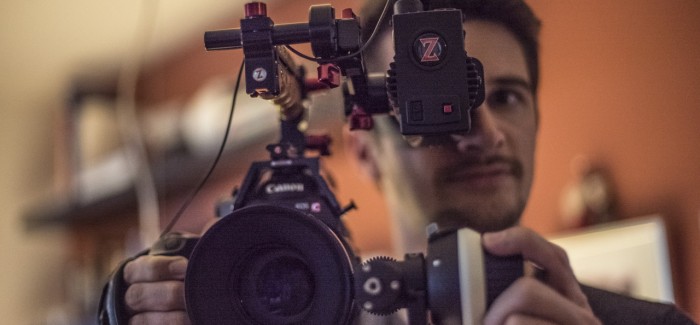
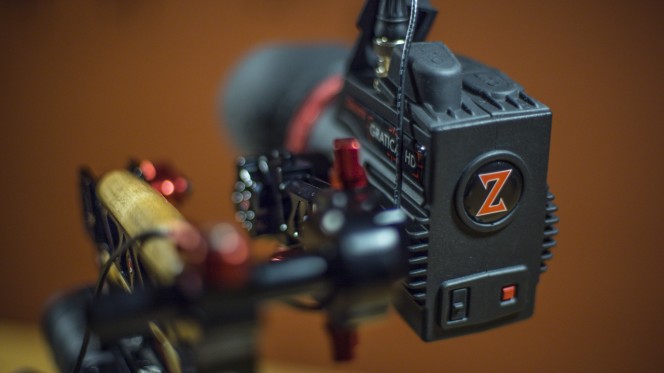
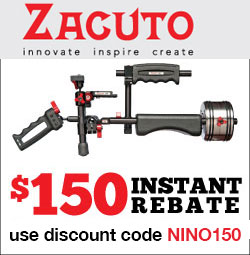
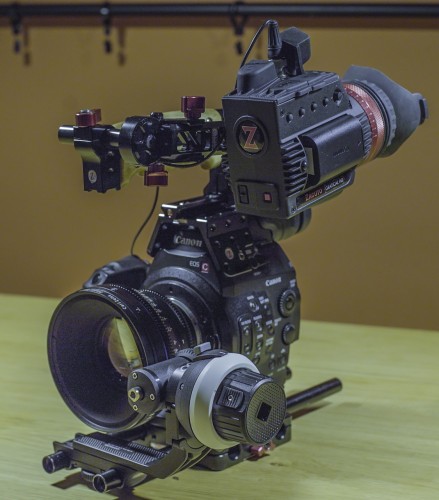
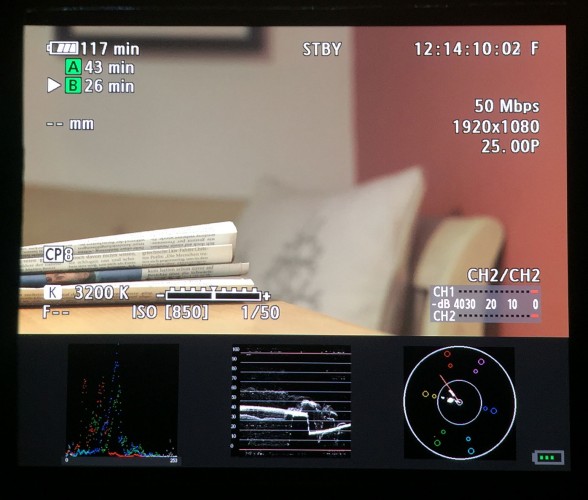

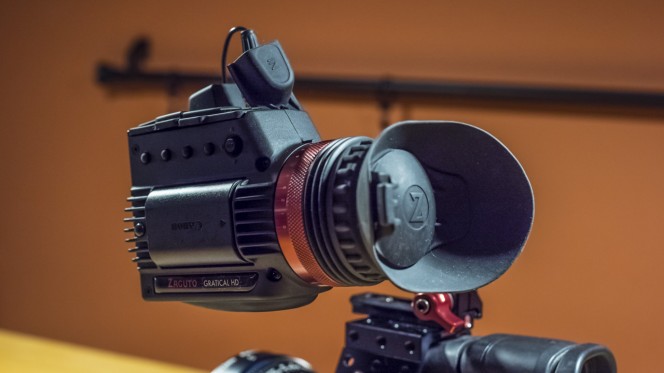
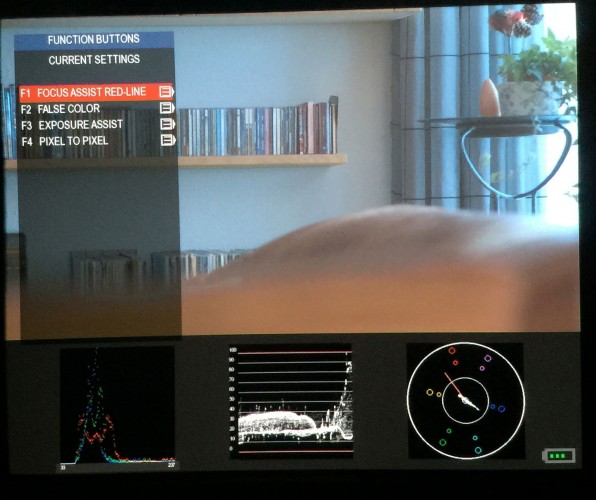
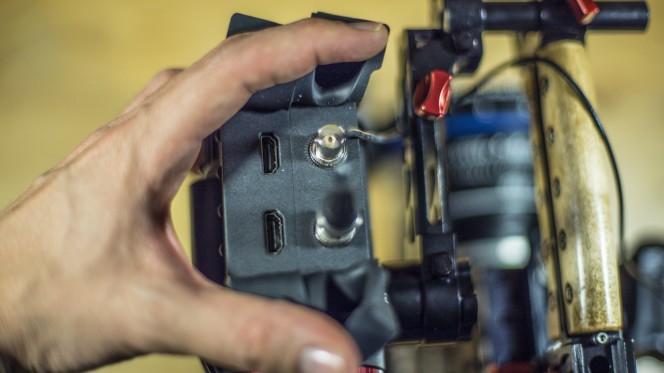
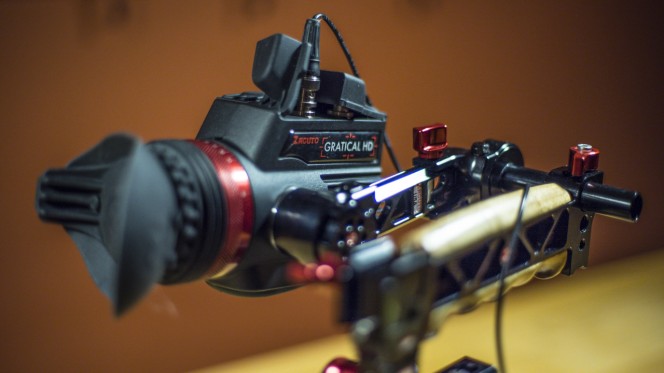
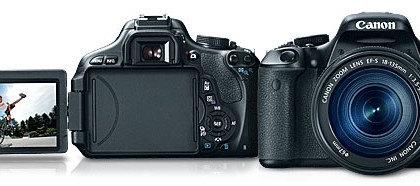
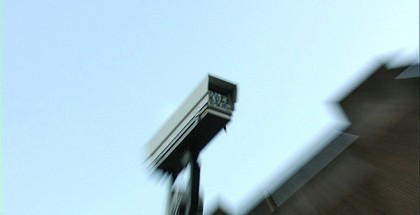
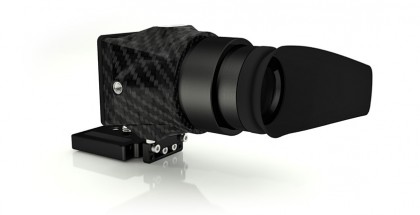


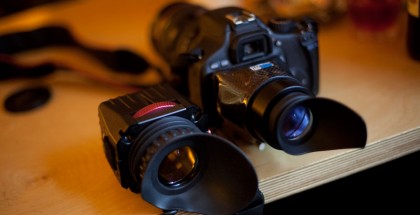
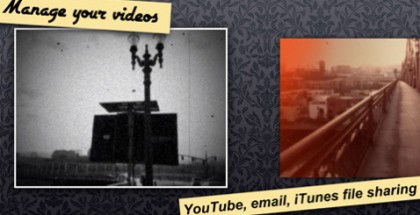
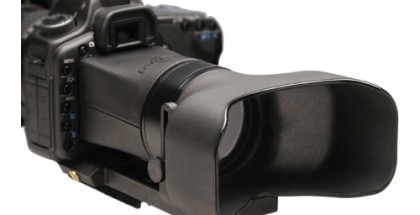












Comments